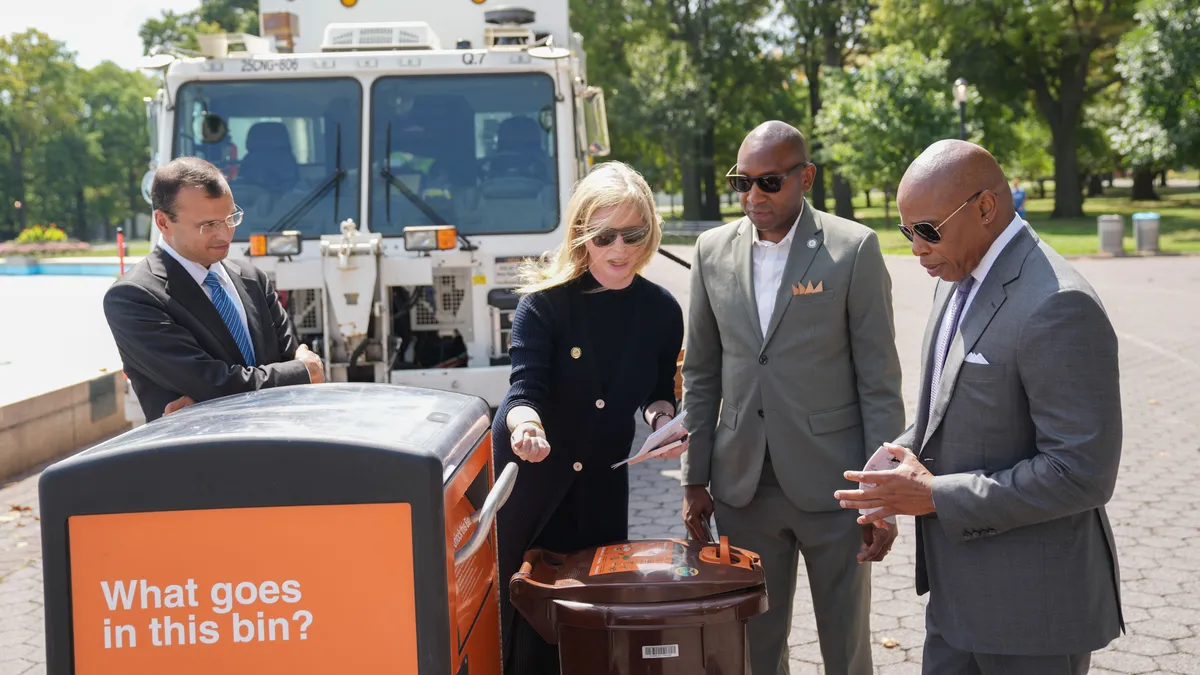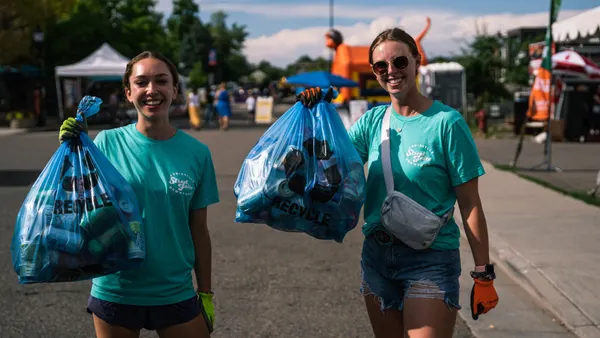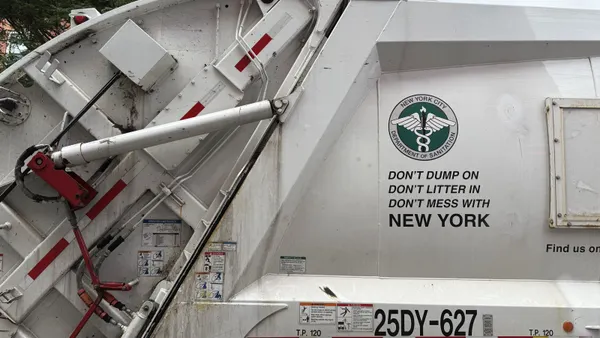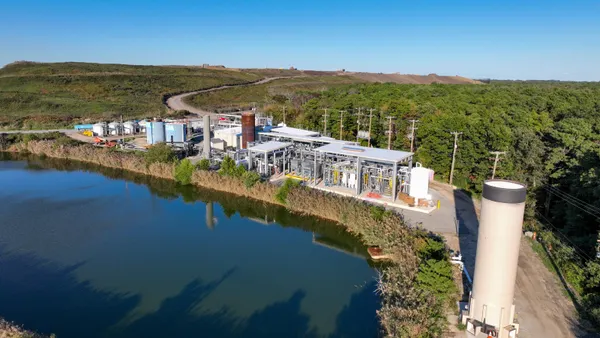Dive Brief:
- New York City’s Department of Sanitation proposed a new rule on Monday requiring households to put their yard waste out for curbside collection separate from other waste, amending the city’s previous curbside recycling rules.
- The rollout of the yard waste separation mandate in New York City will occur borough by borough, starting with Queens residents as soon as the rule becomes effective, likely in June. Brooklyn residents are scheduled to fall under the mandate by Oct. 2, followed by the Bronx and Staten Island on March 25, 2024, and Manhattan on Oct. 7, 2024.
- DSNY is also planning to implement a voluntary curbside program for organics across all five boroughs. The city agency plans to use waste sites that were already involved in the Queens pilot but said it would contemplate additional options as volume increases, according to a spokesperson.
Dive Insight:
The rule is meant to lay the groundwork for a more robust organics collection system in a city where 34% of all residential waste is organic, following in the footsteps of other states and municipalities that have begun to ramp up programs of their own.
The city began a pilot for universal food and yard waste collection in Queens in October. The pilot generated 13 million pounds of organic waste in 12 weeks, according to updated data in the draft rule, much of it from yards.
DSNY contracts with a range of composting, anaerobic digestion and pre-processing facilities in the region that can handle organic waste, including WM’s Varick transfer station in Brooklyn, which can separate out large woody debris. Material also goes to facilities in New Jersey and Massachusetts.
The city plans to allow for a three-month education period before issuing citations for improperly disposing of yard waste, after which fines could start at $25 for residential buildings with one to eight units and $100 for larger residential buildings. The new rule does not apply to all organic waste, although the sanitation department said food waste and other organics could be added into yard waste for collection.
The city does not have a projection for how much volume it expects to generate through the new requirements, according to a spokesperson. The Queens pilot generated more than 200 tons of waste per district in its first six weeks, but more than half of the participating Queens districts collected more than the top Brooklyn district for a similar collection program, suggesting substantial differences between boroughs. One official attributed the difference to a greater amount of yard waste in Queens.
The decision to focus on yard waste collection before including more organics sources follows a playbook used in other cities, where “mandatory yard waste diversion has been the first required step and necessary prerequisite,” according to the proposed rule. It also comes as cities and states look to ramp up organics diversion programs after several yard waste diversion mandates were paused early in the pandemic.














